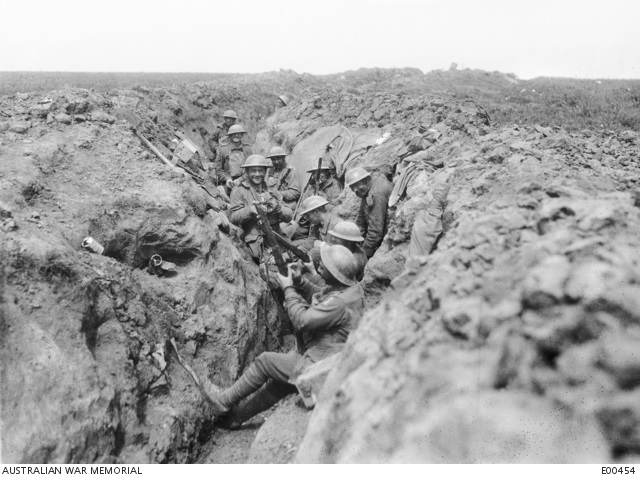On this day in 1917, Australian and British troops finally seized the shattered French village of Bullecourt from the Germans. It was the culmination of two weeks of brutal fighting, known as the Second Battle of Bullecourt, in which more than 7,400 Australians were killed or wounded.
The Battles of Bullecourt were part of a broader Allied offensive. These battles aimed to breach the Germans’ formidable Hindenburg Line, a 140-kilometre-long network which consisted of deep trenches, dugouts and pillboxes, protected by wide belts of barbed-wire and cleverly sited machine-guns. The first Battle of Bullecourt, on 11 April, resulted in defeat for Australian and British troops. This was due in large part to poor planning by the British General Sir Hubert Gough who insisted on using unreliable tanks to cross no-man’s-land, in place of artillery support. Some 3,000 Australians became casualties, including more than 1,100 who were taken prisoner.
The Second Battle of Bullecourt, fought between 3 and 17 May 1917, saw the 2nd Australian Division join British forces to capture the town. This battle was better planned and executed, with Allied artillery support and no tank involvement. However, the Allies attacked where the Germans were expecting and had strengthened their already imposing defences. Once again, Allied infantry crossed no-man’s-land and began working their way through the maze of German trenches.
Bullecourt was eventually taken, due to the determination and sacrifice of the troops involved. But it came at a terrible price – by the end of the two battles, more than 10,000 Australians had been killed, wounded or taken prisoner. It was a victory of limited value. While the Allies had taken and held a small part of the Hindenburg Line, they could do little to exploit it. The British turned their attention to the fighting in Flanders.
Bullecourt, more than any other battle, shook the confidence of Australian soldiers in the capacity of the British command; the errors, especially on April 10th and 11th, were obvious to almost anyone ... Such success as the [Australians] achieved had been won by troops persisting through the sheer quality of their mettle, in the face of errors ... The Second Bullecourt [battle] was, in some ways, the stoutest achievement of the Australian soldier in France.
– Charles Bean, official historian
Four of the five Australian Imperial Force (AIF) divisions on the Western Front fought in the battles of Bullecourt and each emerged in serious need of rest and recovery. As a direct result of Bullecourt, plans to continue expanding the AIF were put aside.
We honour the Australians who fought and fell at Bullecourt.
Their courage, service and sacrifice remain a legacy that shapes how we remember the cost of war and the enduring pursuit of peace.
Lest we forget.

Australians in the second line of trenches before Riencourt (near Bullecourt), in May 1917, cleaning their rifles in readiness for an attack. AWM E00454.